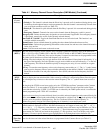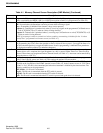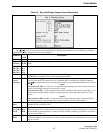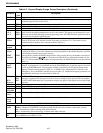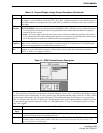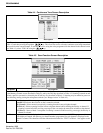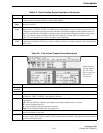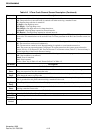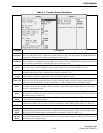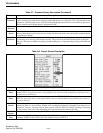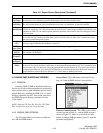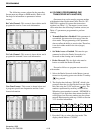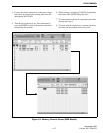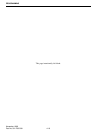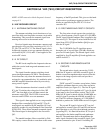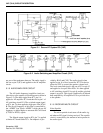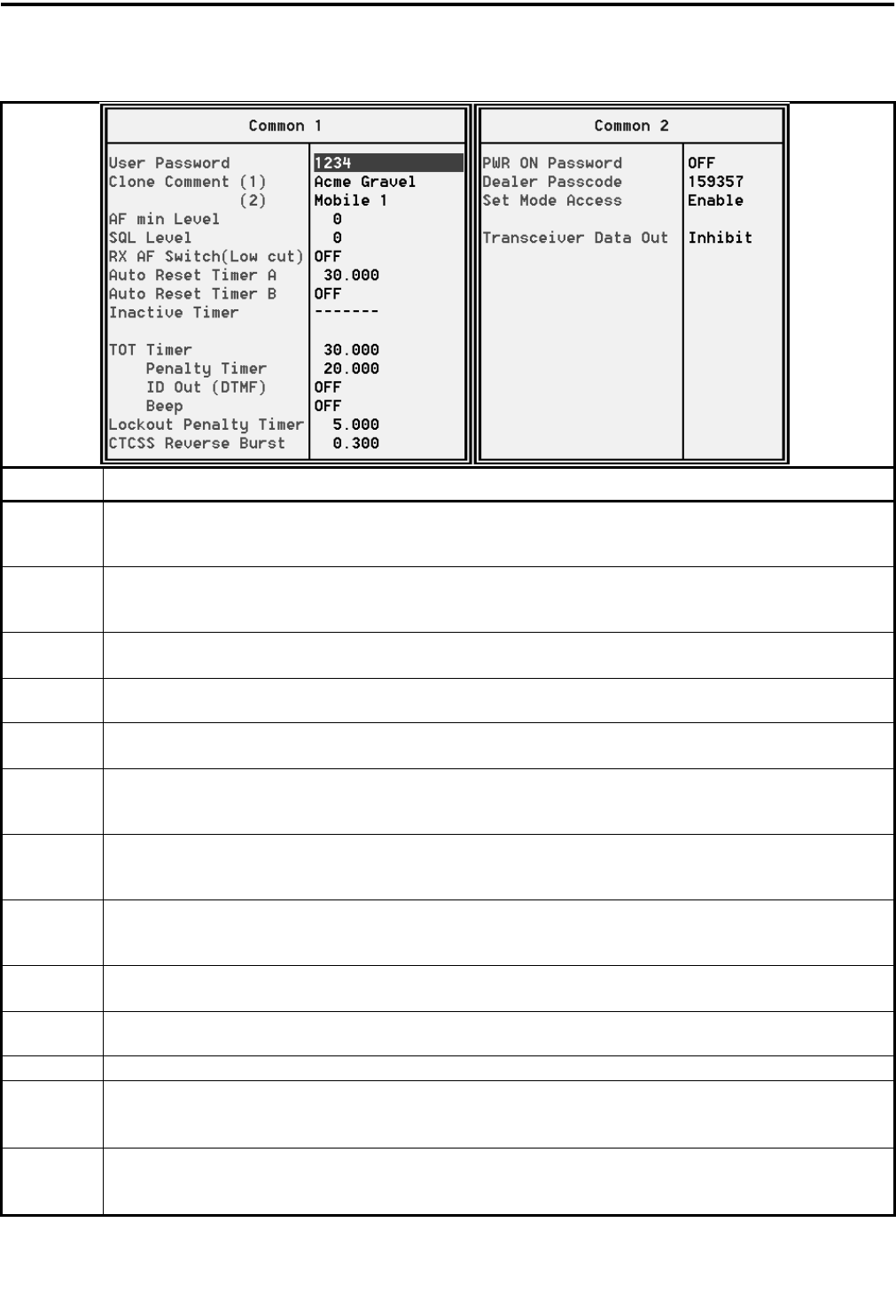
PROGRAMMING
4-13
November 1998
Part No. 001-7600-001
Table 4-7 Common Screen Description
Parameter Description
User
Password
Programs the password that must be entered at power on if the following “PWR ON Password” parameter is
“On” or to cancel the “STUN” condition described in Table 4-6. Any four-digit number from 0000-9999 can be
programmed. The password is entered as described in Section 3.3.2.
Program
Comment
Allows a comment to be programmed in the file for use in quickly identifying the contents of a transceiver.
When a transceiver is connected to the computer, the comment can be checked without reading all programmed
data by selecting “Information” in the Program menu (see Section 4.4.4).
AF Min
Level
Sets the minimum audio level that can be selected by the user. The level can be set in 32 steps with 0 the lowest
level. This setting can be overridden by pressing the F1 in the power-on menu (see Section 3.3.4).
SQL Level
Sets the squelch level in up to 255 steps (0 sets the maximum unsquelched level). This adjustment can be more
accurately made by pressing F4 in the power-on menu (see Section 3.3.4).
Rx AF
Switch
This parameter can be used to disable the high-pass filter that removes the Call Guard (CTCSS/DTCS) signal
from the audio. It should be programmed “On” if Call Guard squelch is used.
Auto Reset
Timer A/B
These timer settings are used by the “Auto Reset” parameter in the channel screen (see Table 4-1). These times
set the delay in returning to the mute mode or “Power On Scan” after receiving a message or pressing a key. To
disable the Auto Reset function, set one of these timers to “Off” (0) and select it in the channel screen.
Inactive
Timer
This feature is available with the PMR (European) mode only. It sets the time in seconds to return to the
“Inaudible” mode after the “Audible” mode is selected. To turn off the inactive timer function, do not assign
“Inactive” in the channel screen.
TOT
Timer
Programs the time-out timer time in seconds. If the transmitter is keyed continuously for longer than this time,
the transmitter is disabled. The time-out timer is enabled or disabled for each channel by the TOT parameter in
the channel screen (see Table 4-1).
TOT Penalty
Timer
This programs the time in seconds that the transmitter is disabled by the time-out timer. The transmitter cannot
be keyed again until this time expires.
TOT ID Out
If this parameter is enabled, an DTMF ID code is automatically transmitted just before the time-out timer
disables the transmitter. This ID code is set on the Log/ID line of the DTMF Autodial screen (see Table 4-3).
TOT Beep
If this parameter is enabled, warning beeps are transmitted 10 seconds before time out occurs.
Lockout
Penalty
Timer
This is the time that the transmitter is disabled if the user attempts to transmit while in the lockout (Transmit
Disable On Busy) condition. Transmitting is disabled for the Lockout Penalty Time even if the lockout condi-
tion is cleared. The lockout feature is programmed on the channel screen (see Table 4-1).
CTCSS
Reverse
Burst
If CTCSS (tone Call Guard) signaling is programmed on the channel, this sets the length of the reverse burst
that is transmitted when the PTT switch is released. The reverse burst prevents the “squelch tail” (noise burst) in
the transceiver receiving the signal.



